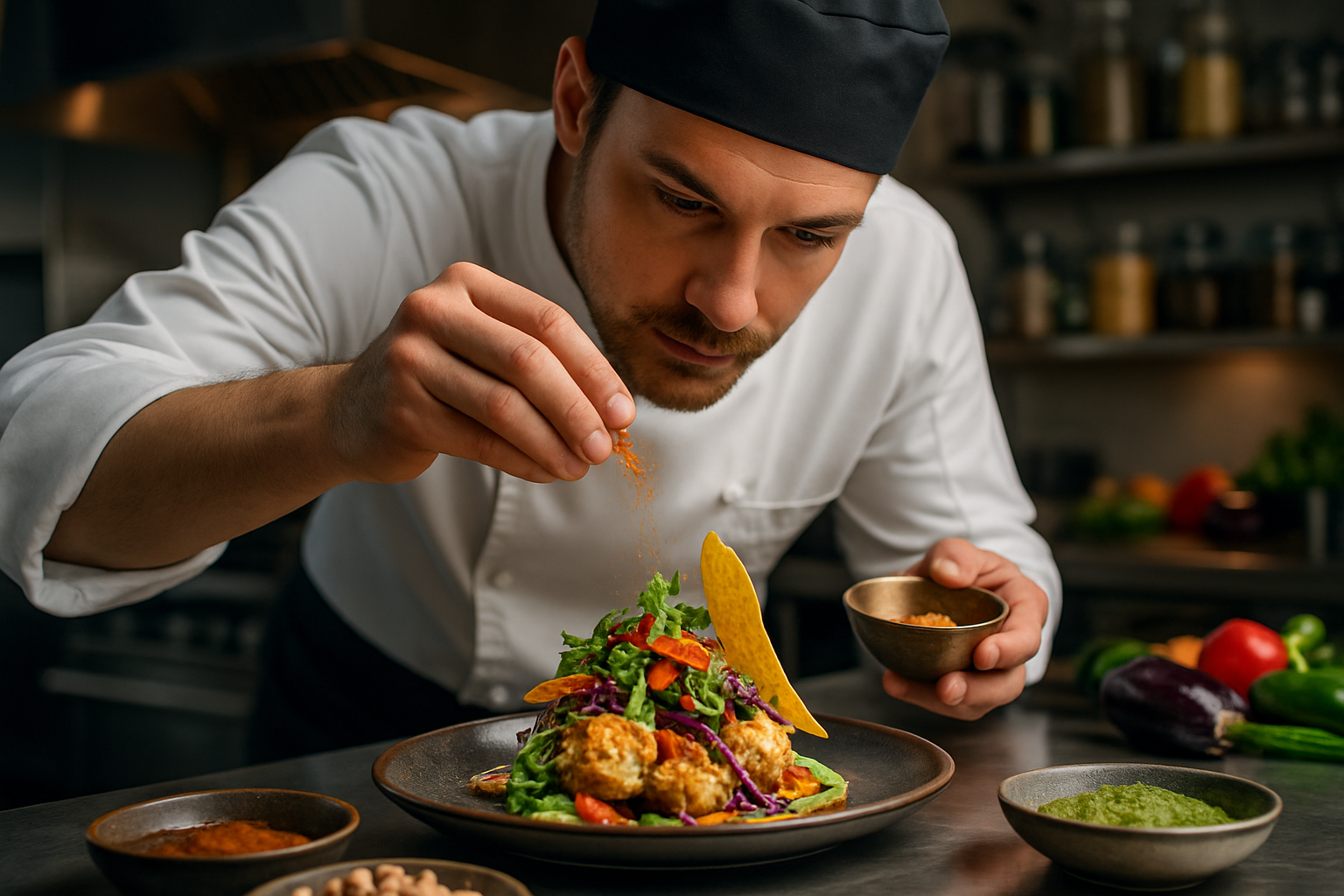Culinary Alchemy: Transforming Humble Ingredients
Discover the magic of turning everyday foods into gourmet delights. This culinary adventure explores innovative techniques to elevate simple ingredients, unlocking hidden flavors and textures. From root vegetables to forgotten grains, learn how to transform the ordinary into extraordinary dishes that will impress even the most discerning palates.

Reimagining Textures
Texture plays a crucial role in how we perceive and enjoy food. By altering the texture of familiar ingredients, you can create entirely new culinary experiences. Consider transforming carrots into a velvety mousse or turning cucumbers into crunchy chips. One innovative technique is using modernist cuisine methods like spherification to create caviar-like pearls from fruit juices or vegetable purees. Another approach is to play with temperature contrasts, such as pairing a warm, crispy exterior with a cool, creamy center. Experiment with dehydrating fruits and vegetables to concentrate flavors and create intense, chewy textures. By thinking creatively about texture, you can elevate humble ingredients into exciting, multi-dimensional dishes that surprise and delight the senses.
The Power of Fermentation
Fermentation is an age-old technique that has seen a resurgence in modern kitchens, offering a way to transform ingredients while boosting their nutritional value and flavor complexity. Beyond traditional ferments like sauerkraut and kimchi, explore unusual fermentations with ingredients like green tomatoes, watermelon rinds, or even leftover bread. Fermentation can add depth to sauces, create unique condiments, and even produce alcohol from unexpected sources. For instance, try fermenting honey to create a tangy, effervescent mead, or experiment with koji fermentation to develop umami-rich flavors in grains and legumes. The slow process of fermentation not only enhances flavors but also creates probiotics that support gut health, making it a win-win for taste and nutrition.
Smoke and Fire: Elevating Through Heat
The application of heat through smoking and grilling can dramatically transform the flavor profile of ingredients. Smoking isn’t just for meats; try cold-smoking cheese, fruits, or even water to create unique flavor bases for cocktails. Experiment with different wood chips to impart varying flavors, from the sweetness of apple wood to the intensity of hickory. Grilling vegetables can caramelize their natural sugars, bringing out unexpected sweetness in ingredients like romaine lettuce or watermelon. For a modern twist, try using a handheld smoker to add a whisper of smokiness to dishes just before serving. The key is to balance the smoke flavor with the natural taste of the ingredient, creating a harmonious blend that enhances rather than overwhelms.
Molecular Gastronomy at Home
While often associated with high-end restaurants, many molecular gastronomy techniques can be adapted for home kitchens, offering exciting ways to transform ingredients. Explore the world of foams, gels, and powders to add new dimensions to your cooking. Use agar-agar to create delicate fruit jellies, or experiment with lecithin to create light, airy foams from vegetable purees. Try turning liquids into powders using maltodextrin, creating intriguing garnishes that melt on the tongue. Even simple techniques like using a whipping siphon can elevate desserts by creating instant, airy mousses or infusing liquids with gases for effervescent effects. These techniques allow you to play with the expectations of diners, presenting familiar flavors in unfamiliar forms and textures.
Culinary Alchemy Tips & Facts
• Blanching vegetables in baking soda water can help retain their vibrant colors
• Aging eggs for 7-10 days improves their ability to hold peaks when whipped
• Soaking onions in cold water before chopping reduces their pungency
• Using a blow torch on citrus fruits before juicing can increase yield by up to 30%
• Freezing fresh herbs in oil creates flavor-packed cubes for easy cooking
• Adding a pinch of salt to coffee grounds can reduce bitterness in the brew
In conclusion, culinary alchemy is about seeing the potential in every ingredient and pushing the boundaries of traditional cooking. By applying innovative techniques and thinking creatively, even the most humble foods can be transformed into extraordinary culinary experiences. Whether you’re experimenting with molecular gastronomy or rediscovering ancient fermentation methods, the key is to approach cooking with curiosity and a willingness to explore. As you embark on your own culinary alchemy journey, remember that the most exciting discoveries often come from unexpected places. Let your imagination guide you, and don’t be afraid to break the rules – after all, that’s where true culinary magic happens.





